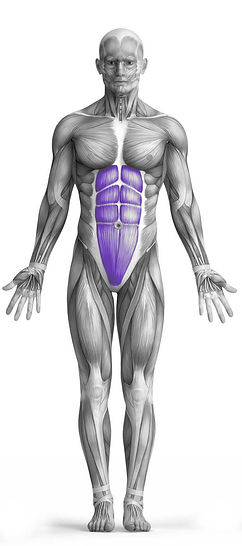Roman Chair Leg Raise 101 Video Tutorial
0

Exercise Synopsis
Target Muscle Group
Abs
Secondary Targets
None
Execution
Isolation
Force Type
N/A
Required Equipment
Bodyweight
Fitness Level
Intermediate
Variations
None
Alternatives
None
Timer
Hour
Minute
Second
Stopwatch
00:00:00:00
Overview
The Roman Chair Leg Raise is an effective bodyweight exercise that primarily targets the abdominal muscles. Performed on a Roman chair or similar apparatus, the exercise involves lifting the legs while maintaining a stable upper body, engaging the core throughout the movement. This exercise helps strengthen the lower abs and improves overall core stability, with no secondary target muscles. It requires no additional equipment, making it accessible for individuals looking to enhance their abdominal strength and endurance. Proper form and control are essential to maximize its effectiveness and minimize the risk of injury.
How to Perform
Start by setting yourself up on the Roman chair, ensuring that your forearms rest comfortably on the horizontal pads and your hands grip the handles for support. Your back should be firmly against the back pad, providing stability throughout the movement.
Allow your legs to hang down from the supports, keeping your feet together and your knees straight. This is your starting position.
Engage your core and, with control, lift your legs upward as high as possible while keeping your body stable. Make sure to avoid swinging or using momentum during the movement to fully activate your abs.
Hold the raised position for a moment, maintaining tension in your abdominal muscles, before slowly lowering your legs back to the starting position.
Continue repeating this movement for the desired number of repetitions, focusing on controlled movements and proper form to maximize effectiveness and reduce the risk of injury.
Tips
To intensify the exercise, focus on holding your legs in the raised position for a longer duration during each repetition.
The more time your legs stay elevated, the greater the engagement of your abdominal muscles.
Gradually increase the length of the hold to challenge your core further and make the exercise more demanding.
How Not to Perform
Avoid Swinging or Jerking Movements: Do not use momentum to lift your legs. Swinging or jerking your body can cause strain on your lower back and reduce the effectiveness of the exercise. Focus on controlled, smooth movements to properly engage your abs.
Don't Arch Your Back: Keep your back pressed against the back pad throughout the exercise. Arching your back can lead to unnecessary stress on the spine and take the focus away from your abdominal muscles.
Don't Let Your Legs Drop Too Quickly: When lowering your legs, avoid letting them fall quickly or uncontrollably. A fast drop can lead to injury and doesn't maximize the work on your abs. Lower your legs slowly, maintaining tension in your core.
Don't Let Your Knees Bend: Ensure your knees remain straight throughout the movement. Bending your knees reduces the activation of your abs and shifts the effort to other muscles, diminishing the effectiveness of the exercise.
Avoid Holding Your Breath: Make sure to breathe steadily throughout the movement. Holding your breath can cause unnecessary tension in your body and may lead to dizziness or discomfort. Exhale as you lift your legs and inhale as you lower them.
Don’t Rush Through Reps: Take your time with each repetition. Rushing through the movement can lead to poor form and wasted energy. Focus on slow, deliberate motions to maximize core engagement.
Don’t Neglect Core Engagement: Make sure your core is actively engaged during the entire movement. If you're not actively squeezing your abs, the exercise will be less effective and could place unnecessary strain on your lower back.
Variations
Variations of fitness exercises refer to different ways of performing a specific exercise or movement to target various muscle groups, intensities, or goals. These variations aim to challenge the body differently, prevent plateaus, and cater to individuals with varying fitness levels.
Alternatives
Alternative exercises in fitness refer to different movements or activities that target similar muscle groups or serve the same training purpose as the primary exercise. These alternative exercises can be used as substitutes when the original exercise is unavailable or challenging to perform due to various reasons such as equipment limitations, injuries, or personal preferences.



